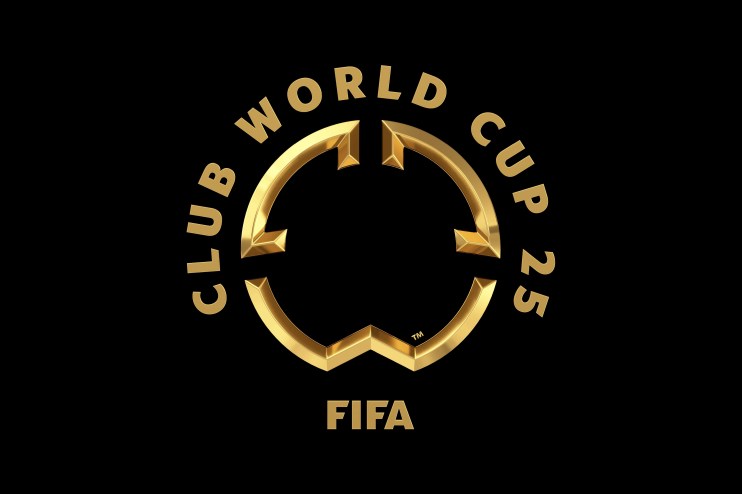Man, sometimes you get sucked into the weirdest projects. This one started because of a stupid argument I had with my old college buddy, Steve, who now thinks he’s some kind of visual branding guru because he watches YouTube videos about typography.

We were sitting there, drinking cheap coffee, watching some highlights package for the upcoming FIFA Club World Cup, and the logo flashed on the screen. Steve, puffing out his chest, goes, “It’s just lazy design, mate. A couple of swirls, a bit of gold, probably means nothing.”
I immediately smelled a challenge. I told him straight up: “You’re an idiot. Every single mega-corporation, especially FIFA, pays millions for that ‘nothing.’ Every color, every curve, means something specific, probably something incredibly boring and corporate, but it means something.”
We ended up betting a month of my painful morning commute lattes on it. I had to prove that the logo wasn’t just random, but a carefully constructed piece of visual messaging. This forced me into a deep dive, turning me into a forensic logo detective for about 48 hours. I had to practice what I preach: if you want the real story, you gotta dig where nobody else bothers to look.
The Research Grind: Digging Past Google’s First Page
My first step, which is always the same, was hitting the usual spots: press releases, official FIFA sites, and the design agency portfolios. But, of course, everyone knows the main logo. That wasn’t enough to win the bet. I needed the brief or the rationale behind the specific elements.
The first few searches were dead ends. Just generic fluff about “global unity” and “bringing champions together.” I swore a lot. I had to go deeper. I started hunting for archived PDF documents, specifically targeting annual reports from 2018 onwards—when the current branding started getting hammered out—and any design journal entries mentioning the agency that handled the rebrand.

Finally, buried in a design firm’s showcase portfolio (I had to use the Wayback Machine just to load the damn thing properly), I hit gold. A small, dry document detailing the core visual identity elements. This was it. This was the practice payoff.
Breaking Down the Core Symbolism
The first thing I zeroed in on wasn’t the color, but the main dynamic shape—that sweeping, swirling motion that holds the trophy in the center. I always assumed it was just stylized movement. I was partially right, but the actual explanation was way more precise than Steve’s “couple of swirls.”
The official explanation said the logo is fundamentally built around two main elements:
- The Core Structure (The Ball/Trophy): This sits dead center, representing the ultimate prize and the global nature of football. Standard stuff.
- The Swirling Ribbons (Dynamic Movement): This is the key. They aren’t random. They are designed to symbolize the six continental confederations uniting in one place. They literally show the flow of energy and competition converging. It’s supposed to look like a movement wrapping around the globe.
I mean, come on, that’s way deeper than “just a swirl.” It’s an engineered symbol of convergence. I felt the surge of victory already.
Deciphering the Color Palette
This was the easiest part to verify, but the most important for proving the level of detail. FIFA doesn’t pick colors because they look nice; they pick them because they align with their strategic messaging. I found the definition for the three primary colors used:

- Strong Gold/Bronze: This one is obvious but mandatory to mention. It represents the glory, the winner, and the prestige of being a world champion. It’s supposed to evoke the shine of the physical trophy itself.
- Deep Blue (The Dark Base): This color is used for grounding the design. According to the notes I found, it signifies solidity, heritage, and trust—the traditional corporate meaning of dark blue, ensuring that even this high-octane tournament feels “stable.”
- Bright, Fresh Green: This was a slight surprise, though it makes perfect sense. It’s not just for aesthetics. This color symbolizes the pitch, the grass, the playing surface where the magic happens. It connects the high-level corporate branding back to the fundamental element of the game itself.
I realized the designers didn’t just pick a nice combination. They assigned a rigid meaning to everything: Gold is glory, Blue is stability, Green is the game. Zero accidents.
The Final Result and Winning the Bet
I compiled all this evidence—the six converging ribbons, the stability blue, the pitch green—into a ridiculously long email and sent it to Steve. He tried to argue back, saying I was just reading too much into it, but I shut him down with the archived design brief. It literally specified that the movement must represent the six confederations converging.
The practice wasn’t just about finding the answer; it was about tracing the corporate intention. It proved my initial point: in big-time branding, nothing is accidental. Every tiny element is a choice, often a painfully bureaucratic and committee-approved choice, designed to tell a specific story.
So yeah, I won the bet. Steve spent the next four weeks grumbling every time he handed me my overly foamy, overpriced latte. It was totally worth the time spent digging through dusty digital archives just to prove a point about corporate symbolism and enjoy some free coffee. Now, let’s see what new logo controversy I can stumble into next week.
